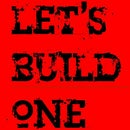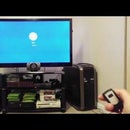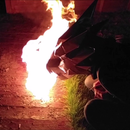Introduction: Beer Can Jet Engine: Mk II
***********************************************************************************************************
THIS INSTRUCTABLE IS NOT FINISHED, I HAVE SOME VIDEOS TO UPLOAD YET. SUBSCRIBE FOR UPDATES.
LBO
***********************************************************************************************************
This is the new and improved version of my Mark I Origional Beer Can Jet Engine. It has a far more severe throat in the air intake to aid compression, a new power suply that is variable and works of mains electricity (instead of a complex power pack) and an inline fuel injection system that opposes the direction of air to improve the fuel-air mixture.
The results were mixed, it wasnt the massive improvement in performance i was expecting but i am pleased that it wasnt a complete failure, i have learned alot about the construction and opperation during my investigation and experimentation and hopefully in the Mark III Engine the culmination of the two builds with result in one engine of definably superior performance.
Visit my website for more information and other similar builds: Letsbuildone.110mb.com
Step 1: Gather the Materials and Tools You Will Need
Materials Required:
@ At least 4 Steel cans, specifically the taller ones and bigger ones are better.
@ Copper tubing, i used half inch diameter plumbing tubing i had in the garage for its rigidity as this will hold your engine together.
@ Some flexible plastic fuel hosing long enough for you to be comfortably far enough from a running miniature jet engine, 3m did me, I got some from my local model shop used for nitro cars.
@ An old hair dryer or other air moving device, leaf blower could work, or a ducted fan/propeller.
@ A variable resistor or potentiometer, I used a dimmer switch of a house light switch in series with the mains power pack.
@ A length of wire as long as your rubber hosing at least, two wires needed to power electric motor for your fan.
@ Really small drill bits and a drill, 1mm or less for fuel nozzles.
@ Tape, adhesives and solder would be helpful.
@ Insulation tape
@A solid piece of aluminium at least 2.5cm diameter, cylindrical, aluminium to save weight and you want it to be up to say around 10cm long to improve fluid dynamics and less than around 5cm diameter. this will be the fuel injector and it will also double up to throttle the air flow to increase compression.
Tools Required:
@ Sand Paper, to smooth and remove paint.
@ Soldering Iron possibly to solder the powerpack.
@ Possibly a screw driver for any choca blocks.
@ Drill to drill fuel nossles with.
@ Sharp knife for cutting cans, tape and general use.
@ Scissors for cans tape and general use.
@ Pliers
@ Relevant Safety equipment, gloves, goggles, fire extinguisher and COMMON SENSE.
@Laithe to turn the aluminium. you may be able to use a clamped drill but be very carefull and use your college or schools laithe if possable as then you can be supervised by trained staff while it is in use.
@Assorted cutting bits, files, wire brushes, and other abrasives to
Step 2: Dissassemble the Ducted Fan
Open your air moving device preferably old hair dryer or a ducted fan from a remote control airoplane. Cheep hair dryers available at supermarkets in the value range and ducted fans from your local model shop.
Obviously make sure if you are using a hair dryer it is unplugged first and you have relevant safety equipment. Take out the electronics and examine it, you do not want the heating coils of the hair dryer, just the propeller and motor; remove the coils if it is possible without hindering the devices ability to move air or blowing the motor, coils in series with the motor act as voltage dividers, removing them is potentialy fatal to the motor. I tried my fan, found it lacking in power so i slowly reduced the length of the heating coil in series with the motor which raised the voltage across the motor increasing its rpm substantialy. Be cautious while doing this because mine is tuned to the point where any further reduction in length would cause a high probability of the heating element getting too hot and burning out, replacing it would be difficult.
You should now have your ducted fan unit with two wires coming out. You now need to get an extension lead of at least 3 meters length in order to distance the controls from the engine while it is in operation. Take your variable resistor and put it in series with the motor, if you use the dimmer switch then it can replace the existing switch. Solder where possible and cover connections with insulation tape. Put the finished electronics in a project box or other non conductive container, safety first.
If possible use a battery rather than mains power as mains power is very dangerous and make sure you get a qualified electrician to check your work, this was easy for me as my brother is a sparky.
You should now be left with a power source connector, a box with a variable resistor in and long wires that are thick enough to handle the current leading to your ducted fan.
Step 3: Start Cutting Up Your Cans
Get your steel cans, make sure they are steel because aluminium will melt and disintegrate in seconds if you try to use it. Dispose of the contents and use a can opener to cut the top of then use a metal file or a sander or something to sand the bottom until the indentation in the middle drops out. if you have the tools then use a core cutter to cut the bottom dent out instead, it will most likely be faster. You should now be left with a can you can see straight down the length of. You can use some pliers to make the flange on the bottom of the can consenric with the outside if you want, this will also make the back hole bigger which is arguably desireable.
On another can cut the top and bottom of the can then slit its length so that you are left with a flat piece of thin steel, this will be used to make your adapter to attach the ducted fan to the combustion chamber.
Step 4: Make Your Combustion Chamber
This section is very similar to the equivilent in my Mark 1 Engine. Get One of your cans with both ends taken off and then a second that is just the bottom half of a can with the bottom cut out. slide the shorter can over the bottom of the taller one and twist gently to secure in place with faith and friction.
Take a piece of the sheet metal from a can and roll it into a tube that fits into the two bottoms of the cans. Mark the join and cut off the excess leaving a 10-15mm overlap. put the tube into the bottom of the taller can and make sure it does not protrude into the combustion chamber too far, less than 5mm preferably 0mm which is possable if you have flanged the bottom of the can with pliers. Solder this in possition soldering the tube itself along its seam and the tube into the bottom of the can around its perimeter.
Slide the shorter can over the tube and push it onto the bottom of the tall can so it is secure and solder the perimeter join.
This is your constructed combustion chamber.
Step 5: Make Your Fuel Injector
My Fuel injector was a part from my brothers attempt to make a self sustaining jet engine while i was at uni. It is made from aluminium and i literaly just thought "oh thats about the right size and shape" and used it with very few changes.
you may find this section difficult without a laithe or a big power drill. You will need a solid piece of aluminium circular section about 3-4" long and about 2" wide, you then need to turn it down to the shape in the picture below or very close to it. This is the restrictor that reduces the area of the inlet manifold raising the input pressure and thus air density allowing for greater compression ratios and the potential for more expansion in the combustion chamber.
In retrospect this piece is far too heavy and a similar hollow alternative would have been far more effective performance wise.
Once your restrictor has been fabricated you need to drill a hole down the centre the same diameter as the external diameter of the thick (10-15mm) copper tube.
You then need to drill several holes around the pieces circumference just after its widest point. This is to improve air-fuel misture. These holes need to be as fine as possible to atomise the liquid fuel as it comes through the hole, Seriously the smaller the better. Mine were too big and i had fuel burning isues with liquid fuel.
Drift the copper tube into the thinner end of the restrictor and secure in place with solder for added security. bend the tube over at a right angle (I realise mine is not a right angle but i didnt have a pipe bender and this was sastisfactory as it fullfilled all the major requirements).
Step 6: Mount the Fuel Injector on the Engine
Now you have the Fuel Injector built you need to mount it on the engine. This is the reason i used the 10-15mm copper tube. It is stiff enough to support the heavy restrictor securely.
Take a piece of the sheet metal from a can that has been cut open end wrap it around your ducted fan exhaust securing in place with a small piece of tape. Then put the other end into the entrance of your combustion cahmber as shown in a picture below. Adjust the sheet metal that is now wrapped into a tube until it is a tight fit in the combustion chamber entrance and allows for a little adjustment so you can change how far it protrudes into the combustion chamber by about an inch.
Draw lines on your tube to show where the overlap is and how far the minimum and maximum protrusion is. Now you need to take the can off the ducted fan again and find a drill bit the same diameter as your 10-15mm copper tube. Mine was 12mm. Clamp a scrap piece of wood in the vice and drill a hole in your tube on the join. Cut off any excess on the inside of the tube leaving at least 15mm overlap and put a slit in one of your holes, the one closest to the edge so that you can slide the copper tube into it without threading it through.
Reconstruct the engine attaching the sheet metal tube to the ducted fan in the position previously marked and test the fit of the fuel injector.
The sheet metal tube is not sturdy enough to secure the fuel injector to the ducted fan with so i used a piece of aluminium box section I "borrowed" from my brother. You could use any sturdy square section material, wood may even suffice. Line up your fuel injector central in the entrance to the combustion chamber and then lie the copper tube ontop of your box section. then draw over it in the outline of the tubes path. Measure and mark the centre of the path and use a set square to translate that line onto its top face and bottom face respectively. Meaure the centre of the sections length and mark it on again using the set square. Since my tube is bent i did not have one hole all the way through the box section rather 2 seoeratly drilled holes so that it would slide through.
Use a centre punch on your marks where to drill and drill your holes with a drill bit the same diameter as the copper tube so the tube is a tight push fit into the holes.
Put the components together and secure them in place with the strongest adhesive available, either solder or areldite/epoxy resin is recomended. Then for extra security I used some Duct Tape.
Step 7: Fuel Inlet Port
The 10-15mm tube is too thick to deliver the fuel down as the engine does not require that much fuel. so i drilled a 6mm hole in the tube an inch from the mount and soldered in an inch long piece of 6mm copper tubing then cut off the excess 10-15mm tubing and crimped and soldered the end of the 10-15mm tube shut.
The 6mm pipe is where you will attach your rubber fuel resistant hose to.
Step 8: Put It All Together
The combustion chamber and ductedfan/fuel injector should now be complete, put it together and get ready for a test run. I have experimented with different fuels but the most stable and easy to work with thus far is lighter gas, Butane that comes in a can similar to a large can of deoderant. These usually come with some small plastic adapters in the cap. Take the long one and push it into the end of your fuel hose you will use the valve in the can itself to vary the fuel input. Its crude but works.
Secure the engine for example in a vise or on the buggy like the one i made which i will upload the instructions for soon. Plug in the power, fuel tubes and don your safety gear. Do a last minute check that everything is set up right, that there are no leaks in the fuel line and that the electronics are properly insulated and have been checked by a qualified electrician. Make sure the engine is very firmly secured and that you have you man on stand by with the fire extinguisher, a guy to cut off the power if neccessary, one to film the test run and one on stand buy with a phone in case anything goes wrong.
Step 9: Test It
You have done your safety check and everything is ready to go. The engine is not self lighting therefore you will need a lighter with a very long handle or idealy a blow torch as the flame is harder to blow out.
Make sure the fan is always spinning blowing air through the engine BEFORE any fuel is put in as if it is done the other way around you could get the highly flamable butane on the electric motor or element which may lead to combustion in the wrong part of the engine and you may cause irreversable damage to it. The electric engine should not be span too slowly as this can damage the motor, do not be afraid to put a decent draft through the engine to start it but bear in mind that the less air is going through the easier it will be to start.
Once the fan is pushing air through the engine slowly push down on the butane valve to let a small amount though. At this point you should have someone pointing a blow torch flame in the exhaust path from a safe possition (not directly infront of it from the side).
You should get a flare out the back, as soon as this happens it is team work time, the fan controller should start to increase the air flow and the fuel controller should slowly increase the fuel flow while trying to keep an invisable flame or blue cone, no orange or yellow flames should be present but too little fuel and too much air will blow out the engine and visa versa you will get big yellow and orange flames which are not wanted.
Once you have the hang of it try making a rig for it to push along or hang it from the rafters in your garage and from the angle recorded in the video the thrust can be calculated via some simple maths.
Please can you send me any videos you make of your attempts or any photos as they will be much apretiated.













